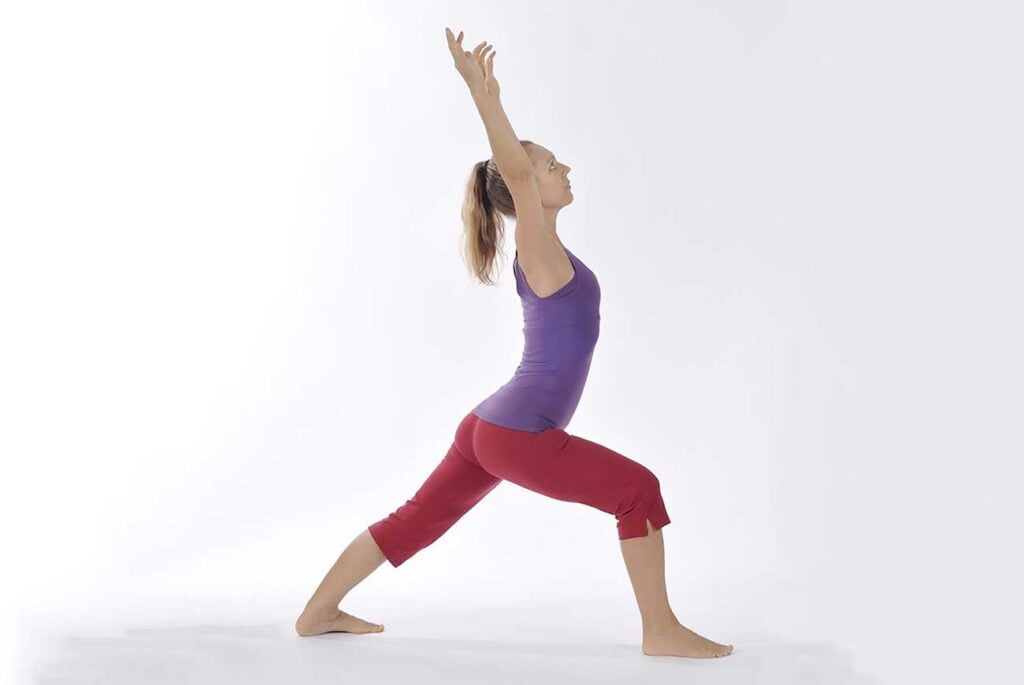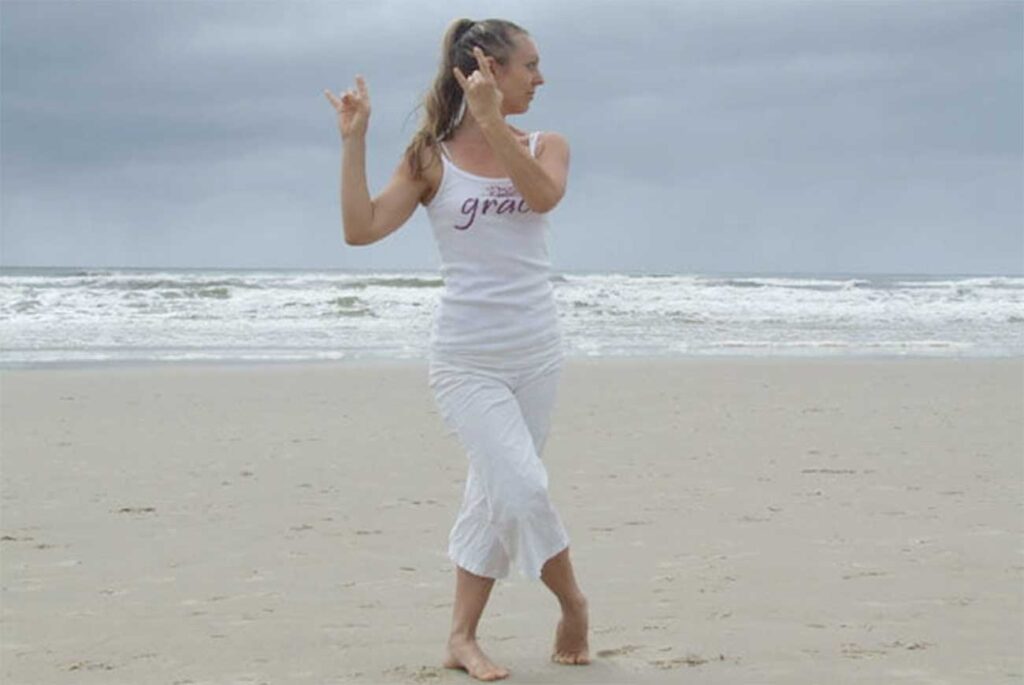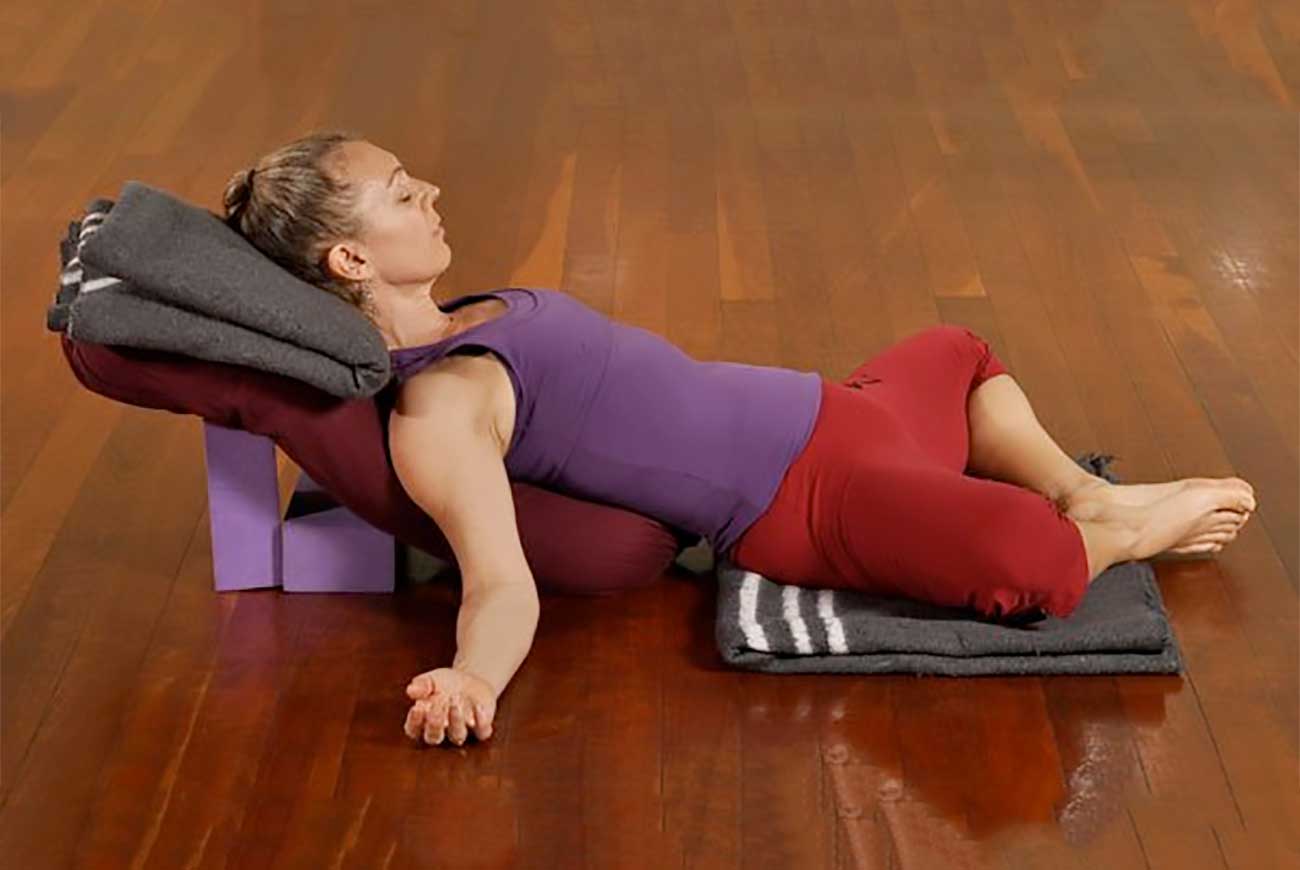The following article is about managing thyroid imbalance with yoga and ayurvedic lifestyle approaches. It forms the conclusion to the article of the same title published in Australian Yoga LIFE Magazine issue 53 Dec 2017. To read the complete article, purchase the magazine from your newsagent, or contact Australian Yoga LIFE for digital copy.
Yoga to Balance Hyperthyroid
If the thyroid gland is overactive, there will be a feeling of anxiety-the heart rate will be unusually fast, and the blood pressure may be raised. Therefore, we want to create conditions for rest and relaxation of the system, definitely without creating extra strain for the heart.
If the heart rate is over 110 bpm at rest, begin with a gentle, passive practice, with mainly supine and some seated postures. The goal here is rest, relax, and bring down both anxiety, and the heart rate. Use as many props as are needed to make everything comfortable and easy to stay in for a long time. Choose gentle abdominal breathing, Om chanting, and deep relaxation such as yoga nidra . Inversions should definitely be avoided in this case as they may increase the load on the heart.
If the heart rate is below 100 at rest, it may be that other asanas can be safely used. If you have one, use a heart rate monitor whilst practicing. Which practices bring the heart rate up over 110? Avoid those. I found personally that the posture which brought my heart rate down to its lowest reading (as low as 65, even when it was 89 lying down at rest) was Halasana, Plough Pose, over a chair-but it may be different for you. Focusing on lengthening the exhale, and Chandra Bhedana (left nostril breathing) which stimulates the lunar nadi help to increase the body?s elimination of ama (toxins), reduce anxiety and calm the nervous system. Sheetali and Sheetkari are also useful to soothe and cool. Om chanting, both as a continuous practice done from a seated position, or done whilst coming into forward bends, helps to slow down the heart rate.
The following is a suggested practice for hyperthyroid. It would also be a suitable practice for relaxation, stress relief, and recuperation.
1. Asana
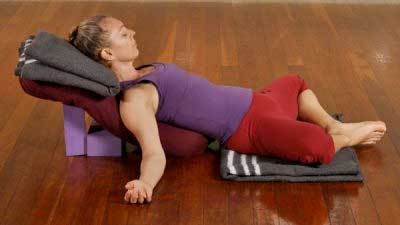
Supta Baddha Konasana/Reclined Cobbler’s Pose over Inclined bolsters ? Free Inhale, Long Exhale
Set up your props as shown. Use folded blankets under the elbows if needed.
Observe the body, observe the breath.
Slowly lengthen the breath.
Start to bring a silent mental count to the ?out? breath.
Inhale comes in at its own length.
Exhale leaves for a slow count of 3.
Do this for a couple of rounds of breath. If still comfortable, lengthen the out breath to a slow count of 4.
Lengthen the exhale every few breathing cycles for as long as is truly comfortable. Stay with the comfortable maximum for 12 cycles of breath.
Stay in the posture for 5-10 minutes.
2. Apanasana – Wind Relieving Pose
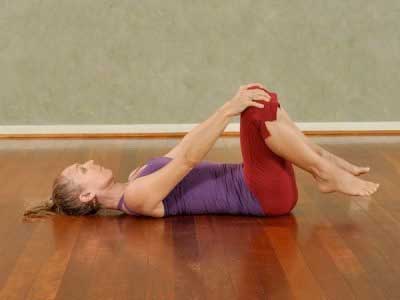
Lie on your back. Bend the knees and place the palms over the knee caps. Start with the arms straight. Inhale.
Exhale as you bend your arms, drawing the knees in.
3. Jathara Parivritti Variation – Easy Supine Twist
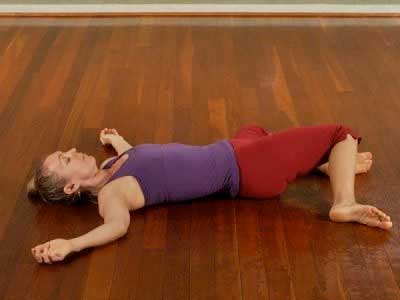
Take the feet out wide and the arms out wide. Walk the feet just a little further forward. Inhale.
As you exhale let the knees slowly move to the right.
Inhale back to centre.
Exhale let the knees slowly move to the left.
This is one round. Practice 3-6 rounds slowly with the breath.
4. Supported Paschimottanasana – Seated Forward Bend
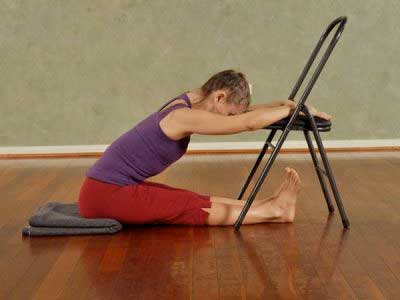
Set up your props at a level that allows you to stay in the forward bend with comfort. Ideally the forehead should rest on something.
Stay in the pose for 5-10 minutes.
5. Supported Upavista Konasana – Wide Legged Seated Forward Bend
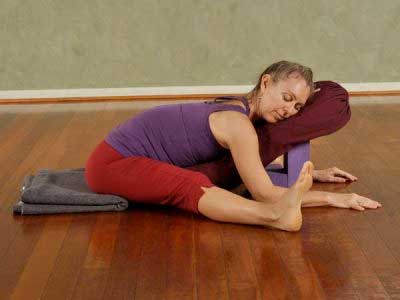
Set up your props at a level that allows you to stay in the forward bend with comfort. If you turn the head to the side, turn it the other way for a similar amount of time.
Stay in the pose for 5-10 minutes.
6. Supported Janu Sirsasana – Head to Knee Pose
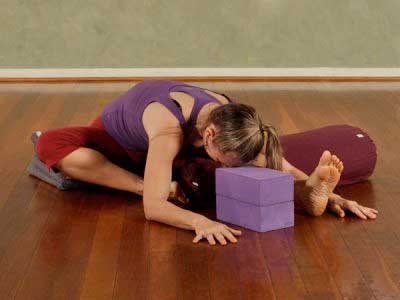
Set up your props so that you have enough folded blankets under the sitting bones to tilt the pelvis forward. Have a bolster under the straight leg knee. Support the forehead with blocks or a chair.
Stay in the pose for 5-10 minutes.
7. Viparita Karani – Legs Up The Wall Pose
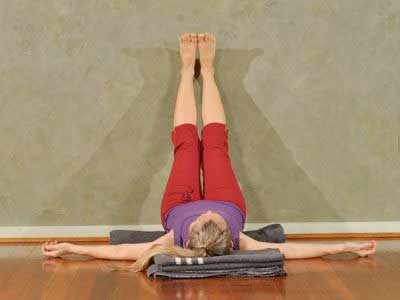
Set up with a long fold blanket under the pelvis and a square fold blanket under the head. Place an eye-pillow over the eyes and cover the feet and legs with a blanket unless you are very warm.
Stay in the pose for 10 minutes.
8. Sheetali-Cooling Breath
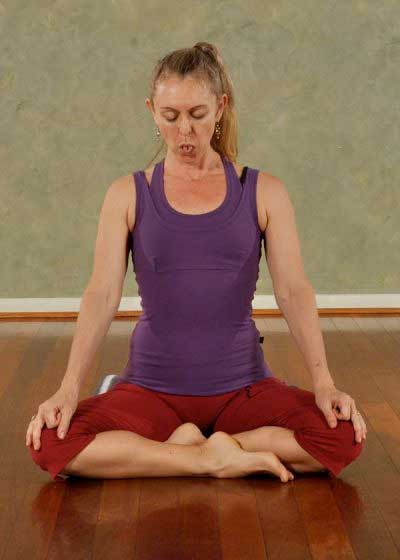
Sit comfortably. Observe the natural breath. Start tolengthen the breath a little.
Breath in through the curled tongue (if you cannot curl your tongue, breathe in through pursed lips, as if breathing in through a straw.). Exhale normally through the nose.
Practice 12 rounds.
Other things to think about
One thing that is integral to yoga therapy is the concept of Bhavana-having a firm belief and a strong intention. I used visualization whilst practicing mantra and meditation/relaxation every day. I visualized my GP saying to me that my test results were good! I tried to really live the feelings of joy and relief on hearing those words.
My Story – How it Panned Out
After doing even just a little research on the expected outcome of traditional Western medicine treatment for hyperthyroid I was pretty motivated not to go down that path! I went instead to my Ayurvedic practitioner, Kester Marshall, from Mudita Institute in Mullumbimby. We both agreed that the best thing for me to do was as deep a cleanse as possible. Whilst I could have travelled to India to do a one month Panchakarma, I honestly felt that having the opportunity to stay at home and participate in a similar cleansing routine was less stressful and more beneficial for me at that time. Mudita offer the opportunity for a non-residential cleanse-coming in for daily treatments and sessions. I took three weeks off work and did the three week cleanse package-which included 2 weeks of prior preparation diet, cutting out things like alcohol, coffee, raw and processed foods immediately, and gradually reducing things like wheat, sugar, most forms of dairy, sours, and fermented foods like tamari and miso. During the two week ‘cleanse’ phase I had specially designed treatments which included steam baths, pindaswed massages (in which a warm bolus of herbs is infused in milk, which is used to rub all over the body, to help draw out toxins) and shirodhara (warm oil continuously poured on the eyebrow centre, to aid in mental calm and stress release.) I had a regimen of herbs to take plus a super easy-to-digest but nourishing diet of mainly moong dahl, veggies and rice. In the second week of the cleanse, I also had oil enemas to help draw toxins from the GI tract. Every few days, I had a consult with Kester, who took my pulse, asked me questions about how I was going, and made subtle changes to my herb prescriptions and treatments. I also had a ‘techno-fast’; ie minimal contact via email, social media, telephone etc-and minimal TV-with nothing disturbing on the viewing menu! After the two week cleanse period, there was another few weeks of ‘re-juvination’ period, during which I gradually re-introduced foods, work and screen time. I was fortunate to be supported by my partner, mother, and support teachers during the cleanse, which allowed me to get the best effects. During the whole process, I practiced a very minimal asana practice with lots of passive and supported forward bends, supine postures and inversions, plus left nostril breathing and lengthened out breath (as per the hyperthyroid practice suggested.)
I had a repeat blood test a week after the cleanse ended-and my thyroid results showed a slight improvement-which after three months of no change was great! The next test a month later showed a little more improvement. The third blood test after the cleanse, two months after it had ended, showed my thyroid was again completely within normal range-a big jump in improvement, that my doctor called a miracle of science?! I have since had three more tests at one month intervals-with the same completely normal result at each. The medical specialist I had been sent to had a very strong belief that there was nothing I could do to alter the condition, and when I asked him about diet changes, told me the condition is non diet related. If I had not questioned this, I could be in a very different position right now. Thankfully, my faith in yoga practice and ayurvedic treatment and lifestyle have proven justified. The feeling I have is one of extreme relief, and gratitude to my support system, to Mudita, and to the ancient science of yoga.
